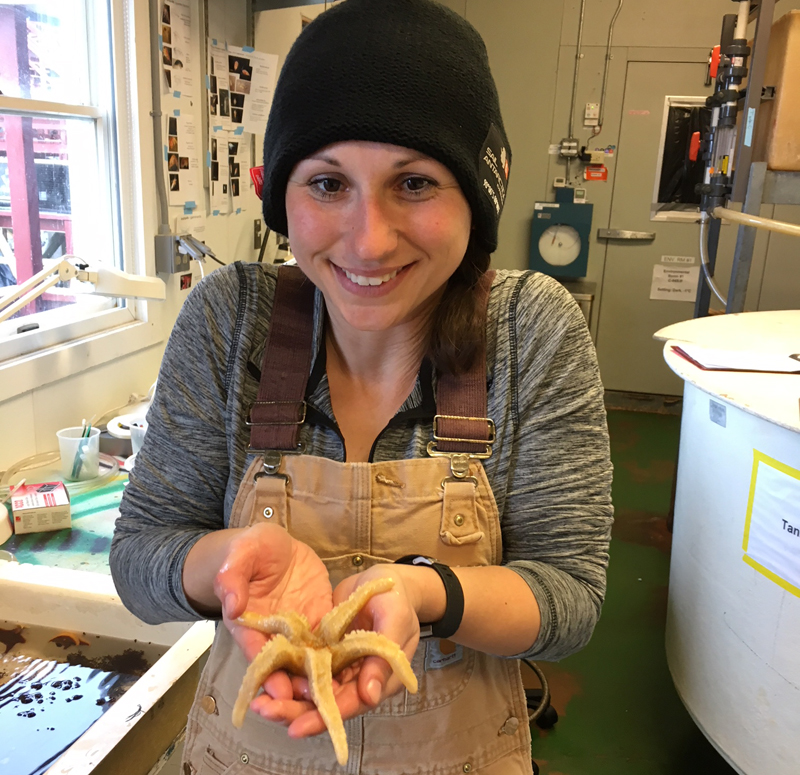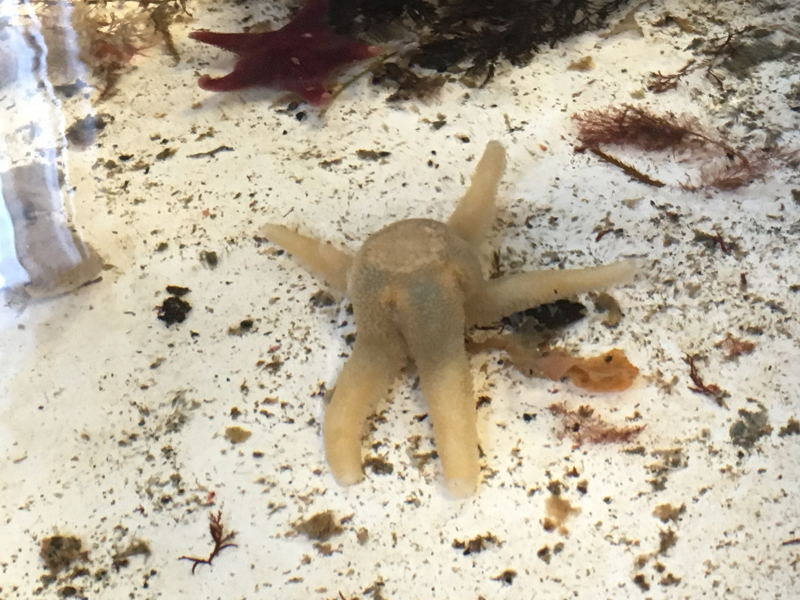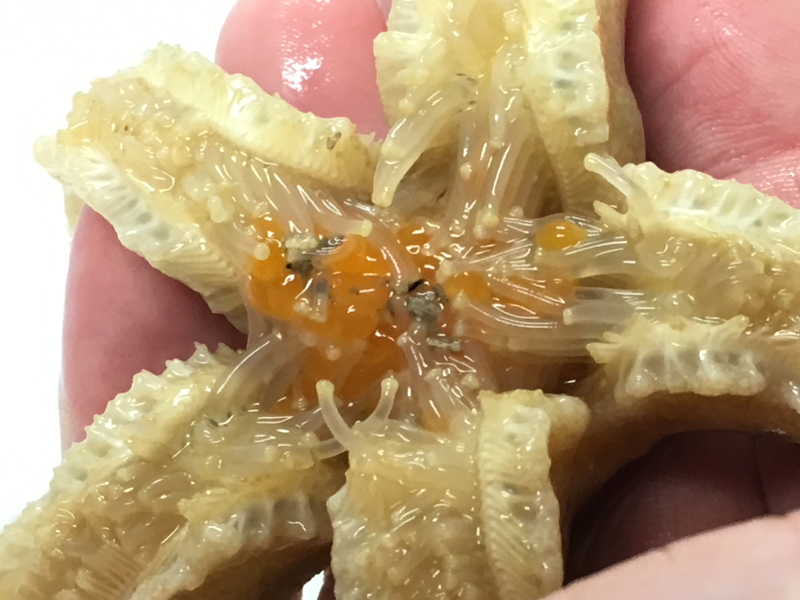
You could hear the joy in the voice of doctoral student Michelle Curtis upon learning that the tan hand-sized sea star (Neosmilaster georgianus) in the sorting table, was in fact roosting on about 100 large, orange yolky eggs.
Globally, most sea stars don’t sit on their eggs, or ‘brood,’ in the parlance of biologists who study marine invertebrate reproduction and development. Rather, when their reproductive organs are bursting with mature eggs or sperm, sea stars broadcast them in synchrony up in to the water. The clouds of sperm and tiny eggs mix together in the water and voilà - fertilized eggs or more accurately - embryos! These embryos develop into tiny swimming larvae that eventually settle to the seafloor and metamorphose into a juvenile five-armed sea star.
Brooders, like the star (short hand for sea star) Michelle found sitting on its eggs today in the Palmer Station aquarium room, have evolved not to release their eggs, but rather, to ‘sit’ on them. The big yolky eggs are fertilized by males that release sperm near the female (there is no mating). The now embryos are held together by sticky mucous and anchored under the female by the tube feet that surround her mouth. To better protect her young, the female hunches up over the brood. To imagine this, place a golf ball on a flat surface and then put the palm of your hand over the ball. Now push down and touch all five fingers to the flat surface and pretend your hand is a sea star. Voilà, a brooding posture as in image below!

Antarctic sea stars brood their young more often than do sea stars that live in tropical and temperate seas. Why is this? It might be that the tiny plants called phytoplankton that nourish larval sea star bloom only a few months each year (usually summer). But larval stars develop very slowly, sometimes spending as long as six months in the water column before settling down to metamorphose. This means that phytoplankton food can be a limiting resource for sea star larvae. Some Antarctic sea urchin larvae (distant cousins of sea stars) were discovered to feed on bacteria to supplement a lean diet of phytoplankton. Nobody knows if sea star larvae do this too.
Brooded embryos that develop into tiny sea star have their yolk-filled lunch boxes packed by mom. There’s a good reason the eggs are so big! As such, the developing embryos don’t have to worry about finding food until they literally crawl out from under mom.

So why has evolution favored two such different modes of reproduction in sea stars? Let’s explore the pros and cons of brooding versus broadcasting. Brooders are protected by mom throughout development (a plus), but because their yolky eggs are so large there are fewer of them (a minus). Broadcasters release their eggs and the resultant larvae disperse widely (a plus) but the exposed eggs and larvae are extremely vulnerable to predators in the water column (a minus). In order to ensure that a few of the broadcasted eggs survive predation, the numbers of eggs produced by an individual female are staggering (maybe a minus). Lastly, brooders can’t feed while they brood because the egg mass sits over the mouth (a minus) while stars that broadcast their eggs can feed just fine (a plus). Remarkably at the end of the day both modes of reproduction produce about the same numbers of surviving offspring. Two very different ways to solve an evolutionary challenge – making babies.